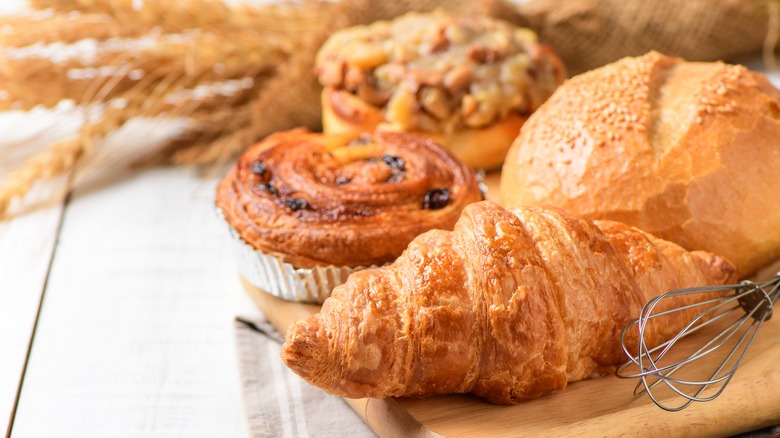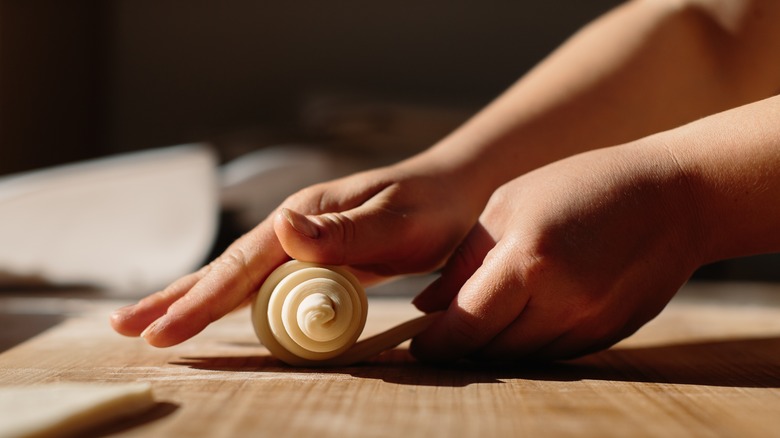The Classic Puff Pastry Mistake You're Probably Making
There are plenty of bakers who have their own areas of expertise, which inherently means there are some styles of baking they would rather not touch at all. Pastry can sometimes be one of those. It's intimidating, finicky, and requires precision and temperature management. Ratios have to be correct to achieve an attractive and nice-tasting final product, and this is where some amateur bakers may stumble. According to Masterclass, there are five common types of pastry — flaky, shortcrust, puff, choux, and filo — and the success of all of those hinges on getting the particular amounts of flour, fat, and water correct. Getting your ratios spot on is easier with a kitchen scale, so if you're into baking, invest in one if you haven't already.
If you've ever set out to make a puff pastry classic like an airy, flaky croissant or a shatteringly crisp mille-feuille but find that your croissants are deflated and greasy and your mille feiulle is more like a cracker, go ahead and blame the butter.
The why behind the puff
According to Allrecipes, puff pastry gets its characteristic rise (hence the "puff" in the name) from "hundreds" of layers of fat and dough. When those layers are baked, the water in the dough and butter creates steam, which puffs up the layers of dough, leaving you with a delicate, flaky pastry (per The Kitchn). If the butter is too warm or is already melting when put in the oven, the layers of dough will stick together, and the butter will just melt out of your pastry, leaving you with a sad, greasy bake. Any regular viewer of "The Great British Baking Show" will know what that looks like and what a bummer it can be.
The road to a deflated or greasy puff pastry starts well before you pop your vol-au-vents in the oven. Timing is essential for making puff pastry. When rolling out and folding your dough, work quickly between stints in the freezer or refrigerator — ignore that text message till you're done! And don't handle the dough too much, especially if you have hot hands (via The Kitchn). It might be easier if you work in smaller batches, as well. If you let your dough sit out for too long, the butter starts to soften, which means your dough becomes sticky and the butter won't do its job. If you do find that the butter is softening, simply put the dough in the fridge for up to a half hour before handling again.

